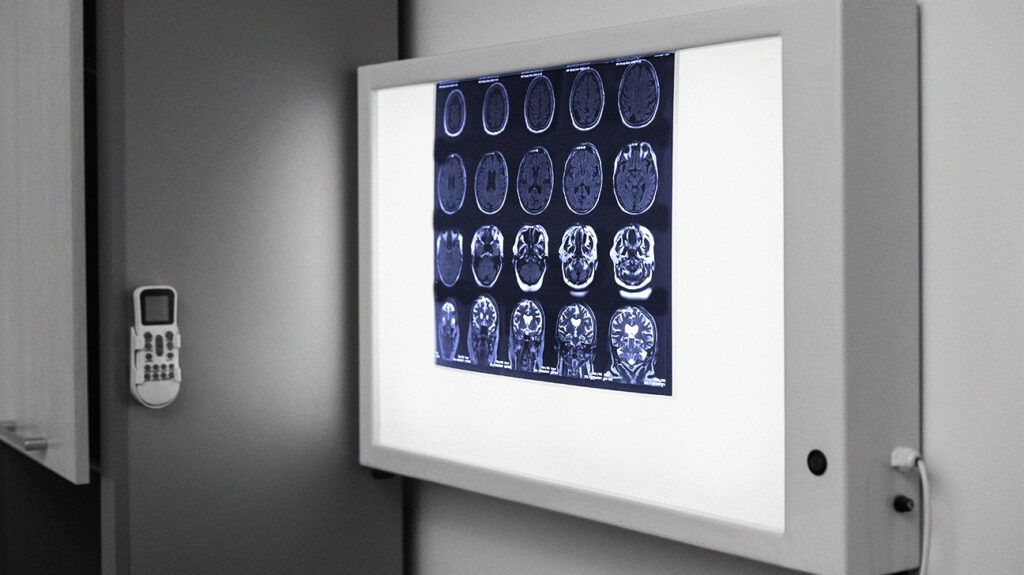Epilepsy involves episodes of altered electrical activity in the brain. As a consequence of the disrupted brain activity, actions of the peripheral nervous system and autonomic nervous system also are affected.
Epilepsy is a neurological (nervous system) disorder that affects the brain, which is part of the central nervous system (CNS). The peripheral nervous system controls purposeful muscle movements, and the autonomic nervous system controls internal organs.
The nervous system includes the brain, spinal cord, and a network of nerves throughout the body. It allows communication between the brain and the body to regulate breathing, movement, and other essential functions.
This article looks at how epilepsy affects the nervous system, treatment, outlook, and when to contact a doctor.

Epilepsy affects the brain, which is part of the CNS.
Usually, the brain produces small electrical impulses in a continuous and orderly pattern in response to the world around a person and their thoughts and intentions.
The electrical impulses travel through nerve cells and neurotransmitters, which are chemical messengers, to relay information and regulate bodily functions.
During epileptic seizures, atypical electrical activity in the brain occurs. During a seizure, nerve cells in the brain
This sudden increase and alternation in electrical activity causes seizure symptoms, such as involuntary movements, behaviors, and altered awareness.
The voluntary nervous system, or somatic nervous system, controls all the physical movements within a person’s control. This
Some types of seizures may cause:
- muscle spasms
- twitching
- jerking movements
For example, tonic seizures can cause muscles to become suddenly tense, stiff, or rigid. Atonic seizures cause muscles to suddenly lose their tone and become weak and limp.
The involuntary nervous system, or autonomic nervous system, controls bodily functions that people cannot consciously affect. This
Autonomic effects are not common in epilepsy but are
During a seizure, effects on the autonomic nervous system may cause:
- abdominal discomfort underneath the ribcage
- palpitations
- goosebumps
- fainting
Cardiovascular symptoms are a type of autonomic change that occurs with seizures and can include:
- tachycardia, which is a fast heart rate
- rapid breathing
- increased blood pressure
- flushed face
- dilated pupils
- excessive sweating
Autonomic symptoms of epilepsy are usually mild and not dangerous, except in some rare circumstances. If someone has a seizure lasting for more than 1 minute or if they seem to be having difficulty breathing, a person needs to call 911 immediately.
Treatment can help people manage seizures and their symptoms. Antiepileptic drugs (AEDs) are the
Other epilepsy treatments may include:
- the ketogenic or Atkins diet
- vagus nerve stimulation
- surgery, in certain cases when other treatments are ineffective
Some research in a 2019 article suggests autonomic biofeedback therapy with galvanic skin response (GSR) may be an effective treatment for seizures in epilepsy.
Autonomic biofeedback therapy uses GSR to provide information about the body to help people voluntarily control certain functions of the autonomic nervous system.
GSR refers to changes in electricity and heat that pass through the skin via nerves and sweat. Certain emotional states or conditions can increase GSR.
A small-scale
In most cases, treatment can help effectively reduce or prevent seizures in those with epilepsy. According to the Centers for Disease Control and Prevention (CDC), AEDs are effective for
Every person’s experience with epilepsy is unique. However, people may be able to manage their symptoms by working closely with their healthcare team and taking any prescribed treatments, such as AEDs.
Individuals can also make lifestyle adjustments to keep themselves safer when seizures occur at unpredictable times that could put them at risk. These approaches may include:
- covering sharp edges
- sticking to showers instead of baths
- using heater and fireplace guards
- using the back burners on stovetops
- avoiding locking the bathroom door
It is important to discuss treatment with a doctor or healthcare team after an epilepsy diagnosis.
A doctor will typically prescribe AEDs as the first treatment and may gradually increase the dose as necessary. It may take
People can also talk with a doctor about other treatments that target the nervous system, such as autonomic biofeedback.
Individuals need emergency medical help if they experience:
- a seizure for the first time
- a seizure that lasts for 1 minute or more
- a cluster of seizures that occur close together without recovery in between
- serious injury or illness following a seizure
- difficulty breathing
Epilepsy is a disorder affecting the central nervous system. It affects both the voluntary and involuntary nervous systems, which control functions within and outside of a person’s conscious control.
Effects of epilepsy on the nervous system can cause symptoms such as muscle spasms and jerking movements, increased heart rate, and rapid breathing.
Treatments can help most people with epilepsy effectively manage their seizures. It is important to start treatment as soon as possible after an epilepsy diagnosis.


